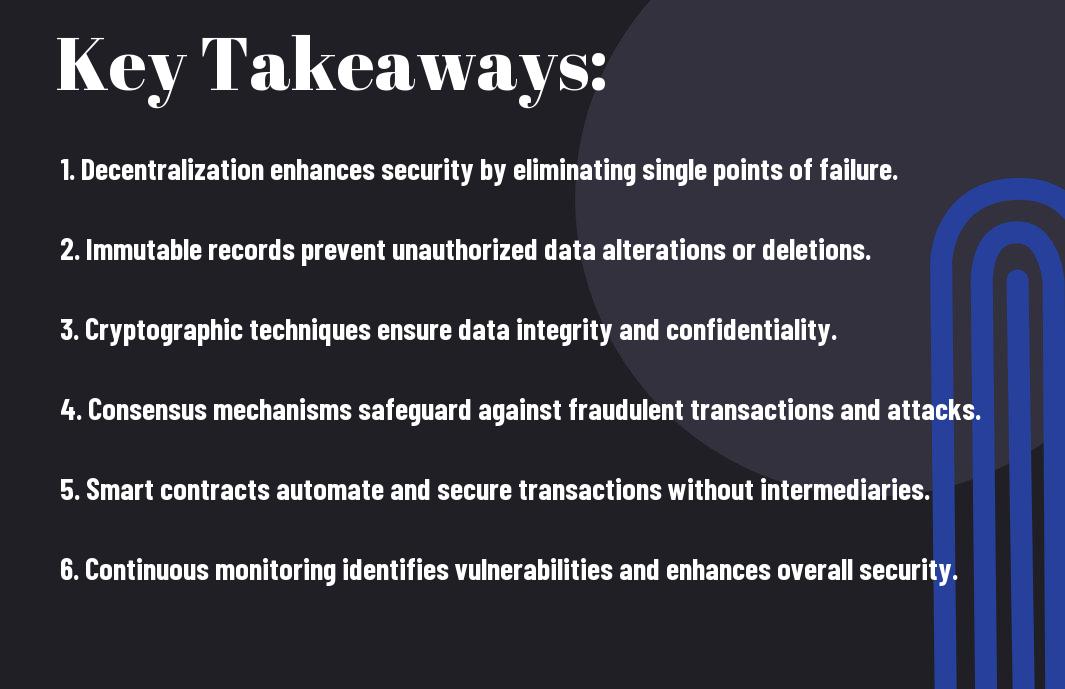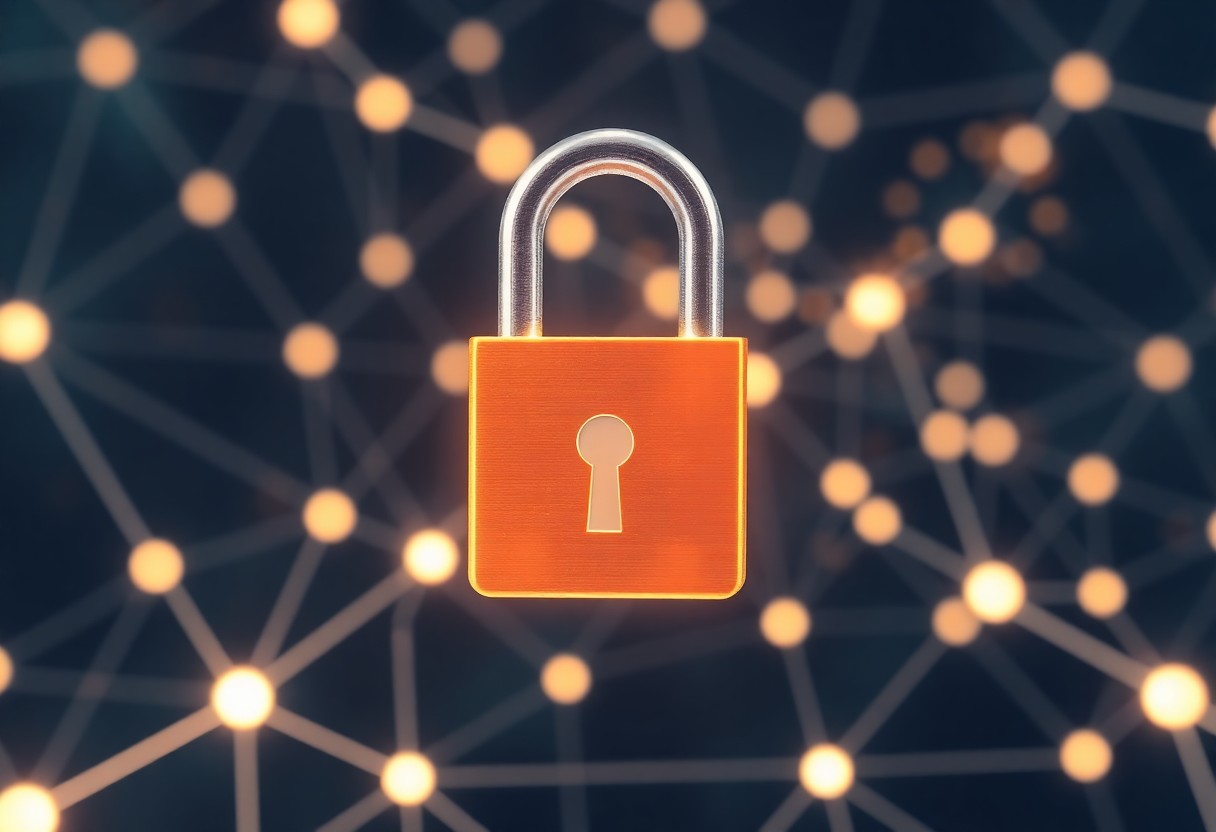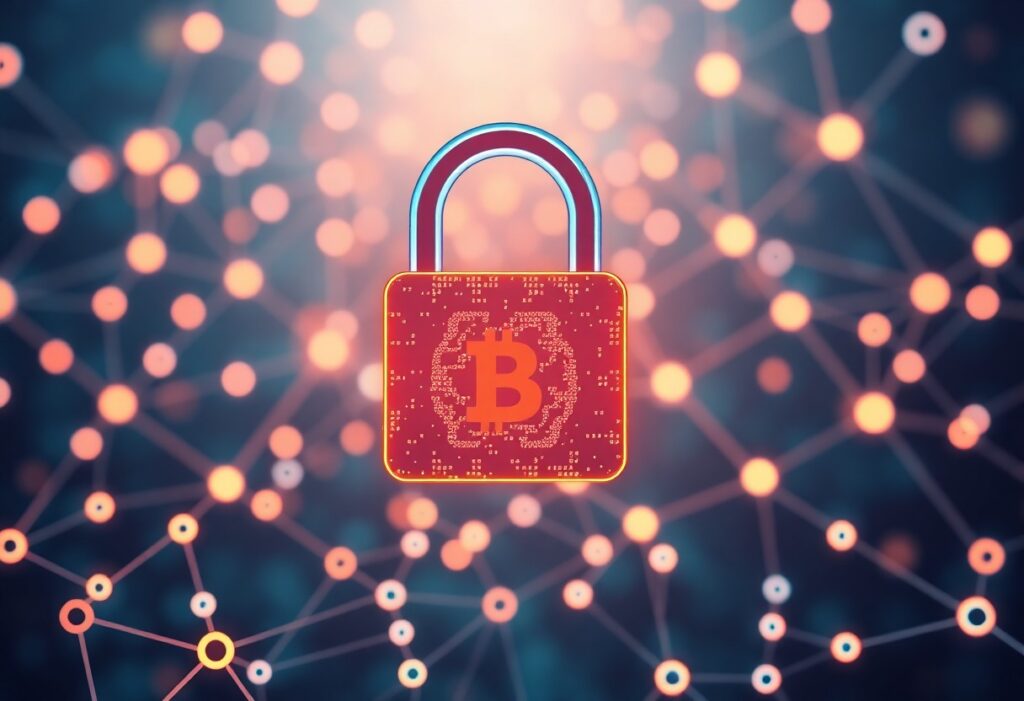Security is a fundamental aspect of blockchain technology that safeguards your digital assets and ensures the integrity of transactions. As the use of blockchain expands across various industries, understanding the principles and mechanisms behind blockchain security becomes necessary for you. This post will explore how blockchain manages to provide a secure environment through decentralization, cryptography, and consensus algorithms, giving you insights into why it is considered a reliable framework for conducting secure transactions.
Key Takeaways:
- Blockchain security relies on decentralized networks, which enhances security by reducing single points of failure.
- Encryption and cryptographic techniques are fundamental to ensuring data integrity and confidentiality within blockchain systems.
- Consensus mechanisms, such as Proof of Work and Proof of Stake, play a vital role in maintaining trust and preventing malicious activities on the blockchain.
Understanding Blockchain Technology
While blockchain technology forms the backbone of cryptocurrencies and decentralized applications, it’s also designed to provide a secure and transparent way to record transactions and share data across multiple networks.
Definition of Blockchain
Among the various digital innovations, blockchain stands out as a decentralized ledger technology that securely records transactions across many computers, ensuring that the recorded data is immutable and transparent.
Key Features of Blockchain
Behind its revolutionary potential, blockchain technology presents numerous key features that enhance its value and effectiveness:
- Decentralization
- Transparency
- Immutability
- Security
- Consensus Mechanism
Thou will find that these features collectively make blockchain a powerful tool for various applications.
Consequently, each of these key features contributes to the overall security and efficacy of blockchain technology. The decentralized nature removes single points of failure, while transparency allows all participants to verify transactions. Immutability ensures that once data is recorded, it cannot be altered retroactively, hence enhancing trust. Robust security protocols protect against unauthorized access, and consensus mechanisms facilitate verification across the network.
- Decentralization
- Transparency
- Immutability
- Security
- Consensus Mechanism
Thou can leverage these key features to better understand your own applications of blockchain technology.

The Importance of Security in Blockchain
If you want to fully utilize the benefits of blockchain technology, understanding its security is important. Security in blockchain ensures the integrity, confidentiality, and availability of transaction data, safeguarding against unauthorized access and malicious attacks. Without robust security measures, the potential of blockchain could be undermined, leading to system vulnerabilities that expose sensitive information and undermine trust in the technology. Therefore, prioritizing security in your blockchain strategy is not only smart but vital for success.
Vulnerabilities in Blockchain Systems
To effectively navigate the blockchain landscape, you must be aware of the potential vulnerabilities present in these systems. Smart contracts, for instance, can contain coding errors that exploit security weaknesses, while network attacks can result in data breaches. Additionally, the interconnectedness of blockchain networks can lead to cascading failures if one part is compromised. Recognizing these vulnerabilities allows you to implement stronger security measures and protect your assets.
The Role of Decentralization in Security
For those leveraging blockchain technology, decentralization plays a vital role in enhancing security. By distributing data across a network of nodes rather than storing it in a single location, decentralization reduces the risk of single points of failure and makes it harder for attackers to manipulate the system. Each node in the network validates transactions, creating a transparent and tamper-resistant record that protects against fraudulent activities. This collective consensus mechanism means that even if some nodes are compromised, the integrity of the overall network remains intact, which can give you more confidence in your blockchain operations.
Security in blockchain is fundamentally strengthened by its decentralized architecture. This design mitigates risks associated with centralization, such as data breaches and unauthorized access. Each node participating in the network has a copy of the ledger, making it incredibly difficult for malicious actors to alter records without detection. As you engage with blockchain technology, valuing decentralization can lead to enhanced trust in your operations, fostering a safer environment for transactions and protecting your assets more effectively.

Cryptography in Blockchain Security
Many believe that the security of blockchain technology is primarily built upon cryptographic techniques. These methods provide a robust framework for ensuring data integrity, confidentiality, and authenticity. By employing cryptography, you can safeguard sensitive information, prevent unauthorized access, and establish trust among participants in the blockchain network. This foundation is necessary for maintaining the decentralized nature of blockchain while ensuring that transactions remain secure and verifiable.
Hash Functions
On a blockchain, hash functions play a vital role in ensuring data integrity. They take an input (or ‘message’) and produce a fixed-size string of characters, which is typically a unique representation of that input. When you alter even a single bit of the original data, the hash output changes dramatically. This property helps you identify tampering or unauthorized changes to transaction records, ensuring that you can trust the data stored on the blockchain.
Digital Signatures
Functions like digital signatures enhance the security of blockchain by verifying the identity of transaction senders. In your transactions, a digital signature is created using a private key associated with your public key. This signature can be authenticated by others in the network using your public key, which ensures that only you could have initiated the transaction. This two-pronged approach not only validates your identity but also guarantees the integrity of the transaction data.
For instance, when you send a cryptocurrency transaction, your digital signature confirms your ownership of the funds. This signature asserts that the transaction can only be initiated by you, preventing fraud or unauthorized usage. Since each transaction is linked to your identity through your public key, the network can trust that, once validated, the transaction is legitimate. This built-in verification mechanism not only secures your transactions but also strengthens the overall trust in the blockchain ecosystem.
Consensus Mechanisms and Their Security Implications
Not all consensus mechanisms are created equal when it comes to security. Each approach, such as Proof of Work and Proof of Stake, has its own benefits and vulnerabilities that can impact the integrity of a blockchain. Understanding these mechanisms will help you make informed decisions about the platforms you engage with and their security measures.
Proof of Work
Below is a consensus mechanism that relies on miners solving complex mathematical problems to validate transactions. This process, known as mining, requires substantial computational resources, making it costly and time-consuming. While Proof of Work is considered secure due to its high energy consumption, it can be susceptible to attacks if a single entity gains control of over 50% of the network’s computing power.
Proof of Stake
Stake relies on validators who are chosen to create new blocks based on the amount of cryptocurrency they hold and are willing to “stake” as collateral. This method reduces the energy consumption associated with mining while increasing security, as the financial investment of validators incentivizes honest behavior. You benefit from a more scalable and eco-friendly blockchain environment.
Plus, Proof of Stake enhances security further by introducing penalties for dishonest actions, which discourages malicious behavior. This mechanism allows users like you to participate directly in securing the network, as your stake can influence the validation process. It’s a more energy-efficient and inclusive approach that aligns the interests of participants with the overall health and security of the blockchain, making it an appealing choice for many new platforms.

Smart Contract Security
Once again, smart contracts exemplify the transformative potential of blockchain technology. However, their security is paramount, as vulnerabilities can lead to significant financial loss and reputational damage. You must be aware of the inherent risks and proactive in implementing security measures to ensure your smart contracts function as intended, without exposing your assets to unnecessary threats.
Common Vulnerabilities
At the heart of smart contract security are common vulnerabilities that can be exploited by malicious actors. Issues such as reentrancy, integer overflow, and improper access control can lead to unintended consequences. You should familiarize yourself with these vulnerabilities to better safeguard your contracts against potential attacks.
Best Practices for Secure Smart Contracts
Behind effective smart contract security lie established best practices that you can implement in your development process. These practices include comprehensive code reviews, thorough testing using independent audits, and adopting formal verification methods to ensure that your contracts work as expected before deployment.
Smart contracts require your attention to detail to enhance their security. Utilize tools like static analysis to detect vulnerabilities early in the development stage. Implementing upgradeable contracts can also be an effective way to adapt to any discovered issues post-deployment. By staying informed about the latest security practices and continuously educating yourself on the evolving landscape, you can significantly mitigate risks and ensure a robust implementation of your smart contracts.
Regulatory and Compliance Considerations
Now, compliance with regulatory frameworks is vital for organizations utilizing blockchain technology. As governments around the world begin to establish guidelines, understanding these requirements helps you mitigate risks and ensure your blockchain operations align with the law to foster trust and transparency.
Legal Frameworks
Any blockchain implementation must navigate a complex landscape of legal frameworks that vary by jurisdiction. Your organization should closely monitor relevant regulations related to data privacy, financial transactions, and digital assets to maintain compliance and avoid potential penalization.
Impact on Blockchain Security
On understanding the regulatory landscape, you can appreciate its profound effect on blockchain security protocols. Implementing security measures that align with regulations not only safeguards your data but also enhances the overall integrity of the blockchain network.
Due to these regulatory imperatives, you must adopt robust security measures responsive to evolving legal standards. This involves regular audits, adherence to data protection laws, and ensuring that your blockchain platforms comply with financial regulations. By doing so, you will not only enhance the security of your blockchain systems but also build confidence with your users and stakeholders, fostering a reputation that prioritizes compliance and trustworthiness.
Conclusion
On the whole, understanding blockchain security is imperative for anyone involved in this transformative technology. By leveraging decentralized networks and cryptographic techniques, you can safeguard your transactions, ensure data integrity, and enhance trust in your digital interactions. As you navigate the evolving landscape of blockchain, prioritizing security measures will not only protect your assets but also contribute to a more secure and transparent ecosystem for all users.
Q: What is Blockchain Security?
A: Blockchain security refers to the measures and protocols put in place to protect blockchain technology and the data it contains from unauthorized access, exploitation, or manipulation. Given that blockchains are decentralized and immutable, security is primarily achieved through cryptographic methods, consensus algorithms, and network protocols that ensure transactions are valid, secure, and transparent.
Q: How does cryptography play a role in blockchain security?
A: Cryptography is fundamental to blockchain security. It is used to secure transactions, generate wallet addresses, and create digital signatures. Each transaction is recorded and stored in blocks, which are linked in a chain. The use of hashing algorithms ensures that any alteration of data is detectable, and public/private key cryptography provides a way for users to securely send and receive digital assets without the risk of fraud or unauthorized access.
Q: What are some common vulnerabilities that could affect blockchain security?
A: Despite its inherent security features, blockchain can still be vulnerable to attacks and exploits. Common vulnerabilities include 51% attacks, where a malicious entity gains majority control over the network’s mining power, leading to potential double-spending and network manipulation. Other risks involve smart contract flaws, inadequate access controls, and social engineering attacks that target users to gain unauthorized access to their wallets or private keys. Continuous security assessments and updates are important to mitigate these risks.





